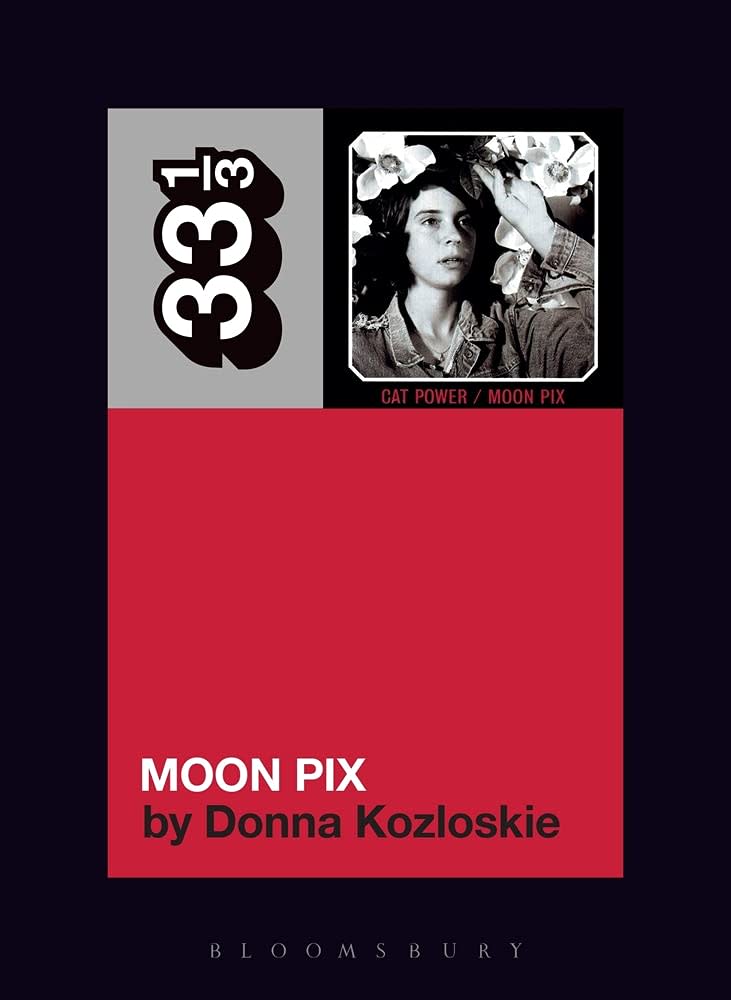How a Columbia author sifted the legends behind Cat Power's 'Moon Pix' album

- Oops!Something went wrong.Please try again later.
Rock 'n' roll lives on its legends.
Not merely on the strength of marquee souls, living and dead, who pass its strains along — but smaller fables that swell and recede in time with the music. Mystical stories about how a guitarist coaxed a spectral sound from their instrument. Passionate recollections of entering the right club at the right time, then witnessing lightning strike on stage.
The legend behind Cat Power's 1998 album "Moon Pix" shakes, rattles and rolls all who hear it. As the story goes, the fourth album from musical mastermind Chan Marshall was delivered as much as it was crafted, arising as a response to the vivid, waking nightmare Marshall experienced while alone in a South Carolina farmhouse.
That origin story certainly captivates Donna Kozloskie.
"If people were to find her body in the aftermath of whatever this nightmare was, she wanted to leave behind evidence of her fate," the Columbia author writes in her new book about the album. "She grabbed her acoustic guitar, and into a tape recorder, she sang. She sang what would become most of the album Moon Pix."
But Kozloskie, a filmmaker, festival programmer and writer, exhibits even more interest in the myths that grew up around "Moon Pix," the legends which attached to it like metal shavings to a magnet.
The burning question "How do we make a legend?" animates her book, one of the newest titles in the 33 1/3 catalog. The long-running series, nearly 20 years strong, builds a Bible of modern music one album and book at a time.
The 33 1/3 series abides the work of venerable music journalists such as Amanda Petrusich and Annie Zaleski as well as musicians-turned-authors Sean Nelson, Colin Meloy and John Darnielle — all diving deep into records whose stories deserve to be told.
More: With 'Iguana Iguana,' Columbia poet Caylin Capra-Thomas offers one of 2022's best collections
'A refraction of Moon Pix'
"Moon Pix" is a remarkable album, vacillating between moods and states of being: from fever pitches to hushed confessions, charming coos to swelling sounds of defiance. Marshall mixes musical colors like a painter — folk, alternative rock, jazz, primal shades of the blues.
Kozloskie first encountered "Moon Pix" as a teen, in the wake of its release. Given a significant focus of her book — how listeners experienced the album in a very specific, late-'90s media landscape — she found it curious and instructive to recall meeting "Moon Pix" visually.
At a brief, beautiful moment when vinyl cost less than CDs, Marshall's visage stared back at Kozloskie from the album cover, she said. The black-and-white photograph scratched a similar aesthetic itch to "The Night of the Hunter," a 1955 thriller Kozloskie had just watched.
A video for the song "Cross Bones Style" also exerted a gravitational pull. Director Brett Vapnek's clip resembled an "alternative GAP commercial," Kozloskie said, with "normal-looking" women moving deliberately, often in synchronicity, to Marshall's gliding, mid-tempo song.
"I don’t know what culture this is coming from, or who these people are — but I’m drawn to this," she recalled feeling.
"Moon Pix" has "always been in the background of my life in a big way," Kozloskie said. The physical vinyl she purchased was ruined in a flood — which somehow still suits the album's warped and weathered sound — but its songs remain a steady presence.
Writing the book presented an opportunity to weave several threads together: the wildness of the album's beginnings, its creative coherence and the cultural moment at which it arrived.
The late '90s represented one last, long revolution for a certain music-business model. Creativity, delivery, music journalism and listener engagement all would change with the Internet's crescendo, growing more democratic, direct and, in some real ways, more slippery.
Kozloskie envisioned the book as an episodic reading experience, not unlike scrolling through a feed, allowing information to snowball, she said. Gathering history and collecting personal legends, she hoped to at least broach the question of how we create collective impressions.
"This book is a refraction of Moon Pix," she writes in her opening author's note. "It's a shattering of each track into the pieces that bring it to life and thoughts about your place in that shattering and life—yes, you!"
More: New Missouri rock from Tidal Volume, Dark Below, The Many Colored Death
Kozloskie discusses "Moon Pix" with sound engineers, photographers, filmmakers, journalists and tour managers who collaborated with or orbited Cat Power at the time.
Concertgoers and writers like former New York Times scribe Ben Ratliff discuss shows where Marshall either fell apart or left her cocoon to become a folk darling — depending on who you ask. Since "Moon Pix" qualifies as a breakup album, touching the end of Marshall's relationship with fellow indie bard Bill Callahan, Kozloskie dives into the music and mythos of breakup records in Q&As with her own exes.
And seeking to understand how stories and songs find us, she said, the book traces the history of "Moonshiner," a folk song Marshall covers on the record — "You're already in hell," she howls on one of the album's most unsettling, gorgeous moments.
"How do you write a history that’s representative of everybody?" Kozloskie asked herself during the creative process. Gathering these voices to convene a sort of rock 'n' roll choir, she both models and explores an answer.
The book acknowledges we're always crowdsourcing our facts and our fictions, Kozloskie said — and that our collective memories are sometimes more accurate than the "official" histories.
"... It is the retelling that lingers on, a porous memory smoothed with age and constantly viewed through different lives," she writes early on. "Collectively, it is decided what parts of what stories will remain and what futures these stories can become."
'Moon Pix was my salvation'

Kozloskie saves her own history with "Moon Pix" for the book's final chapter.
The album "has always been on the periphery of my vision, in short, intense bursts of memories that deeply affected who I think I am. Some of those bursts are told here as stories, others are mine to keep," she writes.
Spending so much time with the record, "Moon Pix" still feels like an "enigma" to Kozloskie. Perhaps it's cliche to describe art as leaving us with more questions than answers — as this book does. But Kozloskie seems to believe asking better questions frees us to breach the world in which art is made and keeps evolving.
More: 2022 Columbia Experimental Music Festival lineup expands to include Anderson, R.A.P. Ferreira
Entering the conversation around "Moon Pix" and Cat Power, the book doesn't build upon the legend as much as reflect it, Kozloskie said, adding to a cultural moment in which we're sifting the ways art and history are collaborative. In this way, the book is an extension of her life's artistic aims, no matter the project or media.
"I view writing about music and making art and programming film ... as part of the art, not part of the story," she said.
Kozloskie leaves the book's last word to Marshall, capturing a quote from a 2018 Guardian interview: "Moon Pix was my salvation as a very mixed-up young person. And suddenly I see that."
What else might be seen through the album's scratched lens, suddenly or gradually, is left off the page, to the reader.
Aarik Danielsen is the features and culture editor for the Tribune. Contact him at adanielsen@columbiatribune.com or by calling 573-815-1731. Find him on Twitter @aarikdanielsen.
This article originally appeared on Columbia Daily Tribune: Columbia author sifts the legends behind Cat Power album for 33 1/3 series

